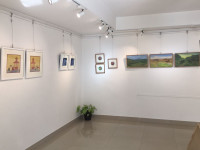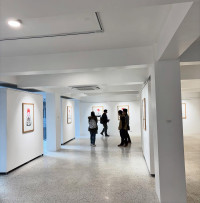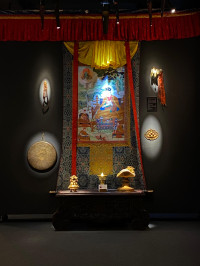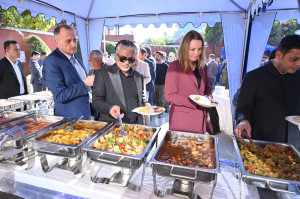Culture & Lifestyle
“Everyone I’ve talked to here has a story about art theft”
Criminologist Emiline Smith speaks about trafficked artefacts, how they are repatriated and what art means to different cultures.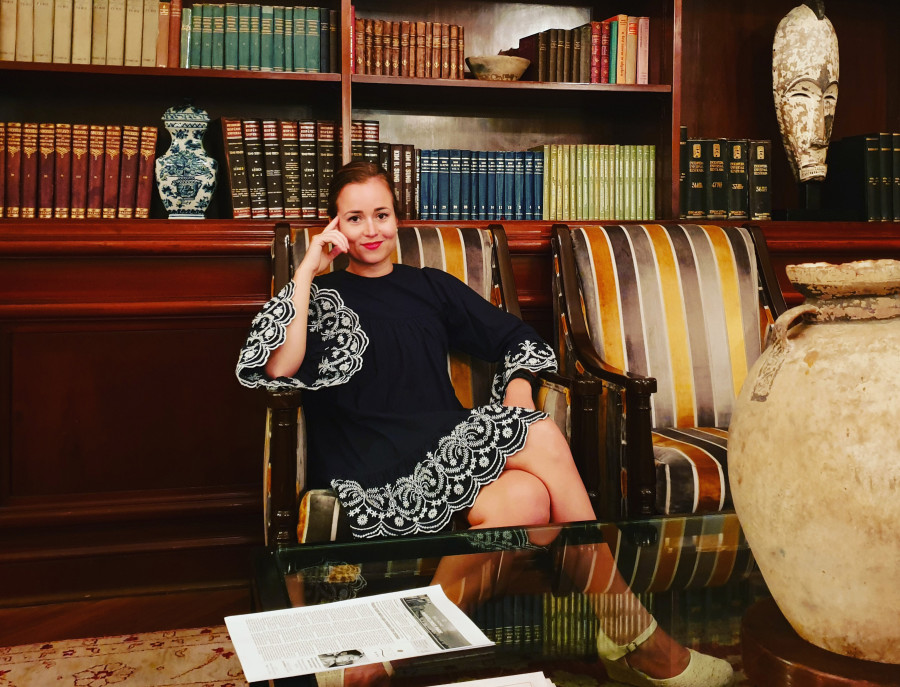
Shashwat Pant
Emiline Smith is a lecturer in Art Crime & Criminology at the School of Social and Political Sciences, and a member of the Scottish Centre for Crime and Justice Research, at the University of Glasgow.
Emiline's research interests include transnational crime, organised crime, and crimes of the powerful. Her research primarily focuses on Asia, where she explores how and why participants take part in illicit transnational trades—particularly the trafficking of 'special' commodities, such as antiquities and wildlife.
The Post recently spoke to Smith about her work and how idols are trafficked to the West. Excerpts:
What is your role as a criminologist?
My job as a criminologist is to look at both the global network and consider the local context of illicit trade, so we can identify weak points in the trafficking chain where we can effectively intervene. To pose questions like, why is it done? How is it done? Who are the stakeholders? Why are they involved in these activities? I also focus on knowledge, legislation and enforcement gaps. What do we not know? And what are the gaps in countering such trade? What can we do to stop trafficking of cultural objects?
Why are you in Nepal? What is your current research about?
The research I’m doing now explores key issues and stakeholders related to the custodianship of movable cultural heritage in Nepal and Myanmar. In this era of globalisation and development, what is the government's priority when it comes to culture and heritage, what is people’s relation to culture and heritage and how does that link to illicit trade of cultural objects? These are areas we work on. Most importantly, we investigate interdisciplinary approaches to improve understanding of national and local crime prevention strategies to counter illicit antiquities trafficking—to see what works and what does not.
What I have found so far is that sadly, everyone I’ve talked to here has a story about art theft. Whether it’s a temple or a shrine, people have stories of art being looted.
People often ask me why are others stealing their gods? If their god is being worshipped abroad; whether they are taken care of. I have to tell them that their god is behind a glass display, where everyone is ogling it or it’s in storage. No one is touching it. There is no tika on its head nor are there flowers at its feet.
What I’ve noticed about Kathmandu though is people know what their cultural objects, their gods, are worth, which is why they have started to put up locks in temples and shrines. Put up barricades. These aren’t paid by the government. It's done by the community itself.
But when we look outside of Kathmandu Valley, cultural objects are still easily accessible, in a monastery for example. This forms a risk, providing opportunity for people to steal them. But on the other hand, why should you have to bolt down your gods?
When did Nepali artefacts start being trafficked abroad?
The art market is centuries old and is based on a system of exploitation: wealthy buyers in market countries are buying looted and trafficked artefacts from culturally-rich countries. These cultural objects are violently taken from their local context, to be kept in public and private collections where they are accessible to a select few. In Nepal, everyone I’ve talked to always cites 1970-80 as a time when art was trafficked the most. It was a booming business for Nepali art, and for other Asian art. The Global North was fascinated with so-called ‘Oriental art’. It became easier for people to travel and as borders opened, it paved the way for the trafficking of such objects. There was not enough enforcement during this time, even though Nepal had already signed the 1970 UNESCO Convention and had adopted its 1956 Ancient Monuments Act.
When you talk to younger people in Nepal about the idols that are abroad, what is their response like?
It's mixed. For some it's a matter of identity; they want to preserve their culture and want the gods to be brought back to where they belong. They want to worship the same gods that their grandparents worshipped. But for some, there are more important issues like getting a job and paying bills, and think the government should focus on creating better social infrastructures.
What do other people tell you? Should these be returned?
Well it depends from person to person. Some say we should forget about bringing back what has already been lost and that we should now focus on saving what we currently have. Some local communities refuse to take back the objects because they know that the same thing can happen again, so they should be supported more effectively to protect their gods. This is why some returned gods are now in museums. But others feel strongly, and rightly so, that the idols belong to them, and should be with them. When an idol disappears, it creates a real sense of loss within a community. Traditions and rituals change or even stop. As these gods, and other cultural objects, are very much part of Nepal’s heritage, they belong in Nepal.
When you meet traffickers, what is their response like? Why do they do it?
Of course, most are in it for the money. Some art dealers tell me they get a kick out of doing it. The most exciting thing for them is to buy something for a small price and sell it for a million dollars.
Most of them also have a real passion for the artefacts. They will talk about the items with excitement. They feel in control of the fate of an object that was created hundreds of years ago. Some believe they are saving such objects from getting destroyed, while others believe that people with money are better able to take care of them.
How does the West look at art? Especially Asian art?
The global market is in the process of developing an ethical consciousness when it comes to art. Museums are actively looking into their collection, hiring provenance researchers to research the history of an object, such as who owned it and how it got to the museum. The reality is that many objects have been or could have been looted from source countries during colonial times, and it is time to rectify that loss and create public awareness around this. But disappointingly, we still have examples of private collectors and museums buying stolen art and not asking the right questions and doing enough research.
How are cultural objects repatriated?
It’s not an easy process, because we often do not know the exact location where an object was taken from, and certainly do not have any record of it. That is why inventories are so important. Reclaiming an object from abroad is a long and expensive process, and involves national governments, Interpol, local communities, and others. Even identifying where objects currently are, for example in museums and private collections abroad, is difficult and requires assistance from the public, such as with the Nepali statue which is currently in the Dallas Museum of Art. This is why it is important that every level of society is aware of the extent of the global illicit trade in antiquities. And it is extremely important that local communities, municipal government, national government, international organisations, and other parties involved all support each other to stop this illegal transnational trade.




 18.12°C Kathmandu
18.12°C Kathmandu
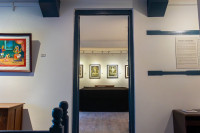
%20(1).jpg&w=200&height=120)
